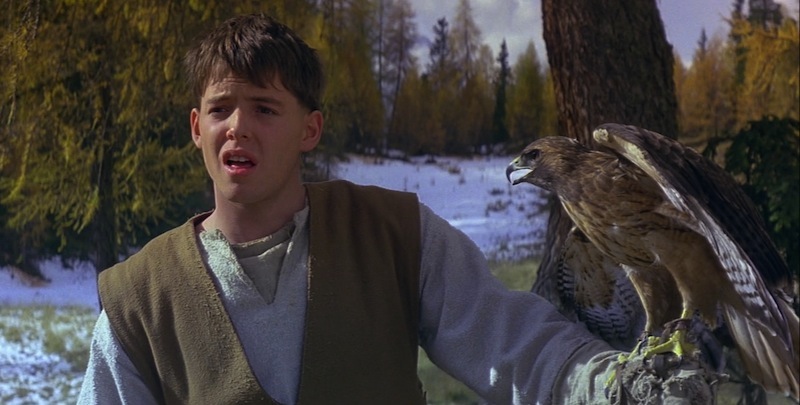I spent last month rewatching a bunch of 1980s fantasy movies. (I know, I missed some, I’ll get there eventually.) Sometime around the middle of the month, I revisited Ladyhawke for the first time since high school, and found myself surprised at just how well it held up. True, some elements have not aged well—an opening song that recalls nothing so much as the MacGyver theme, for instance—but on the whole, it ended up being one of my favorites. And the more I think about it, the more I think Ladyhawke may be the most successful of all the fairy tale films.
Ladyhawke was released in 1985, as part of that decade’s wonderful fantasy boom. But Ladyhawke doesn’t behave like a typical 80s fantasy movie, or a modernized fairy tale, or even a fairy tale subversion, let alone a heroic quest or coming-of-age tale.
In The Princess Bride and The NeverEnding Story, we get a modern wraparound to ground us in the present. Those movies check in with their modern protagonist periodically—we see that The Grandson is grossed out when Westley and Buttercup keep kissing, and we know that Bastian is committed to Atreyu’s journey no matter how dark and spooky the school’s attic becomes. And in Labyrinth we have the comforting idea that Sarah’s the one generating her adventure; halfway through the film, when she’s returned to her room, we see the seeds of the film all around her, including a doll that looks like Jareth, stuffed animals that look like the Goblins, an Escher poster and Maurice Sendak books that all provide visual cues. Plus obviously she’s reading a book called The Labyrinth in the opening shot of the film. In Legend, The Dark Crystal, and The Last Unicorn it’s immediately clear that we’re in worlds where magic is an accepted part of life—neither Princess Lily nor Schmendrick run screaming in terror when they first slap eyes on a unicorn.
In Ladyhawke, however, we only gradually become aware that we’re in a fairy tale, and this slow reveal informs the movie’s tone in fascinating ways.
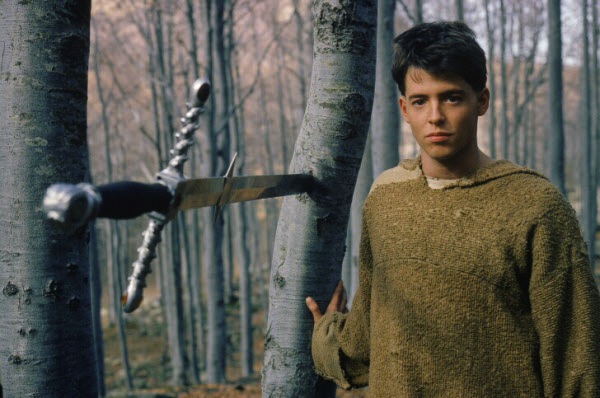
What are the rules of this world?
At first we seem to be in a normal medieval world. We join our protagonist, Phillipe Gaston, as he escapes prison and emerges from a fortified city into a bucolic landscape. We quickly learn several things:
- Philippe is called The Mouse because of his ability to sneak in and out of tight spots in search of loot.
- He’s a notorious enough thief that everyone in the prison knows his nickname, and the Bishop himself wants him hanged for his thievery.
- The Bishop is Not a Nice Man.
We get all this information quite efficiently through a series of crosscuts in which commoners are hanged while the opulently-dressed Bishop celebrates Mass and the beleaguered Phillipe crawls through the sewer beneath. (This is movie shorthand for an uncaring system.) Phillipe also keeps up a steady, if one-sided, conversation with God, promising not to steal anymore and asking for help getting out of the sewer. What soon becomes apparent is that this is a normal thing for Phillipe: he talks to God constantly, subverting the hierarchy of medieval Catholicism just as he remains outside of lawful society by stealing what he needs. Someone coming to Ladyhawke with no knowledge of its position as a fantasy would assume that we’re about to see a film about a little guy going up against an oppressive, hypocritical theocracy. It’s actually pretty realistic as far as medieval films go, and gives no hint about what’s actually to come.
I’ve written in the past about my deep affection for Stephen King’s IT. There’s a scene in IT where Stanley, one of the children being targeted by a demon, grapples with the horror of, well, being in a horror novel. As he realizes that the monsters under his bed are real, he muses that if anyone in 1950s Derry, Maine saw a Biblical miracle happen, their response would not be wonder, but sheer terror:
Go to your church and listen to your stories about Jesus walking on water, but if I saw a guy doing that I’d scream and scream. Because it wouldn’t look like a miracle to me. It would look like an offense.
The first time I read the book (at 12-ish?) that moment really hit me. That moment (which King gives a fair amount of time to develop in an otherwise action-packed book) summed up a lot of how I was beginning to feel as I left the magical universe of my childhood for a more rationalist adolescence. And, this might seem like a stretch at first, but that moment illuminates what I love about Ladyhawke.
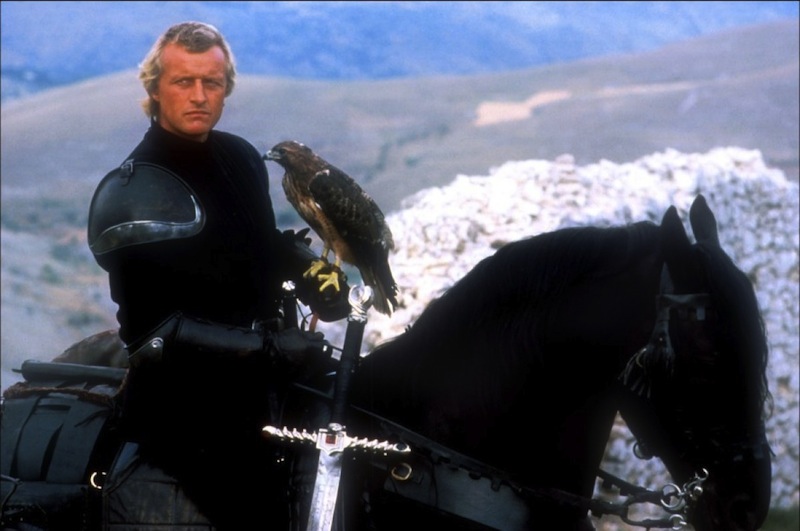
Even after we meet Etienne Navarre and his beautiful hawk, the film plays its cards close to the vest. We meet Isabeau, and see that she has a special relationship with the wolf, and we see that Navarre disappears at night. Obviously, we figure it out pretty quick. But Philippe doesn’t—because Philippe isn’t in a movie, or a fairy tale, or a legend. He’s an ordinary (if quite skilled) thief, just trying to stay ahead of the law. When he sees Isabeau with the wolf, he begs God not to make him part of their mysterious relationship, and then challenges Navarre:
There are strange forces at work in your life. Magical ones that surround you. I don’t understand them, but they frighten me. You have given me my life. The truth is I can never repay you. I have no honor, and never will have. I don’t think you would kill me for being what I am, but better that than to return to Aquila.
Of course, a threat from Navarre keeps him there for a while, but he does escape several times, only to find himself dragged back into Navarre’s story. When the hawk is wounded during a fight, he callously tells Navarre that “the poor thing is done for” without realizing what he’s saying. It isn’t until he takes her to the monk Imperius, and then sees Isabeau in the bed with a fresh wound in her shoulder, that all the pieces fall into place.
Even then, he plies Imperius with liquor to get him to tell the whole story, because he can’t really believe what’s happening. The friar tells him the tragic story, and imbues it with great cosmic importance. He was father confessor for both Navarre and Isabeau, but in a drunken stupor he revealed their love affair to the Bishop, who was in love with Isabeau. The Bishop then cursed the lovers to the half life in which they’re always together, yet eternally apart. This is a great fairy tale, and they could have just left it there, but instead the film takes it a step further, and Imperius explicitly states that the Bishop allied himself with Satan in exchange for the curse, which was spat up from Hell itself. So now we know the group isn’t just fighting to restore Isabeau and Navarre’s full humanity, so they can live happily ever after—they’re fighting a minion of Hell itself.
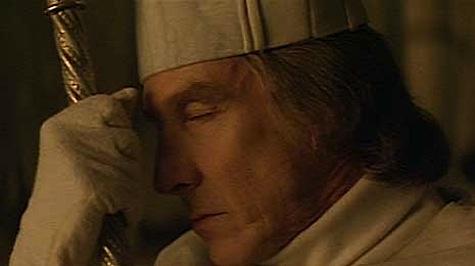
But wait, there’s more! Imperius tells his new friend, “You have stumbled onto a tragic story, Philippe, and now, whether you like it or not, you are lost in it like the rest of us.” But that’s just it: this is not a typical fairy tale world. This curse is an aberration, a horrible moment of the world going off its axis, and supernatural forces breaking into the material world. It’s only our four protagonists who are trapped in this story, and now reality begins bending around them.
Imperius’ exposition comes 50 minutes into a 121-minute-long movie. From this point we’re in a very different film. Literally as the protagonist learns he’s trapped in a fairy tale, we’re introduced to an evil, bloodthirsty huntsman.
Now That We’re in a Fairy Tale, Let’s Start Subverting!
The bishop hires a vile man named Cesar to hunt down Navarre in his wolf form, thinking he’ll be able to capture Isabeau after that. However, here again the film subverts the usual fairy story, as we’ll see.
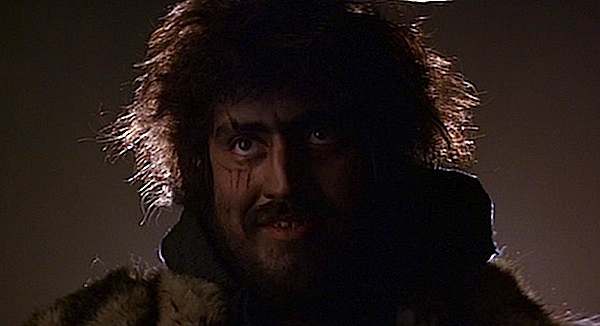
One of the big debates people have had over the last year is what constitutes a “strong female character.” Is she a Robert E. Howard-style lady warrior? A Ripley/Sarah Connor-style hard ass? A Michelle Yeoh-style ass-kicker? Back in the 80s, this debate hadn’t really caught fire yet. The women in most 80s fantasies were either beautiful but vapid (Princess Lily, Buttercup) or warriors (Teela, Sorsha, Valeria). Isabeau is revolutionary to me because she is neither of these. She is a believable woman of her era, with a hint of an unhappy childhood, who is put in an extraordinary situation and rises to it.
Isabeau has lived essentially alone for three years, or, to state it more plainly: every night Isabeau wakes up naked and alone in a forest, dresses herself, defends herself, and hunts rabbits for her meals, while tending an enormous horse and keeping an eye on the giant wolf—who is fully a wolf, remember, and could wander into trouble at any time. She has done this for three solid years at the start of the film. So when a real threat comes in, the film gives us a quick fakeout before trampling a particularly annoying fairy tale convention.
When Cesar first finds Isabeau and Philippe, it is the boy who brandishes Navarre’s sword, telling the villain, “If you lay a hand on her, you’ll find it on the ground next to your head,” which is an admirably badass line. Cesar, however, is not impressed, since Philippe almost collapses from the weight of the sword, and laughs at him before riding on. A second later, it is Isabeau who comes charging out on Goliath. She stalks Cesar through the forest, using all the stealth she’s learned in her years of isolation to track him. When Navarre’s wolf form turns up, growling at Cesar, Isabeau exploits the huntsman’s moment of distraction to kick him into his own wolf trap. She stands over him and watches him convulse until she’s sure he’s dead—no pity, no fear, no squeamishness.
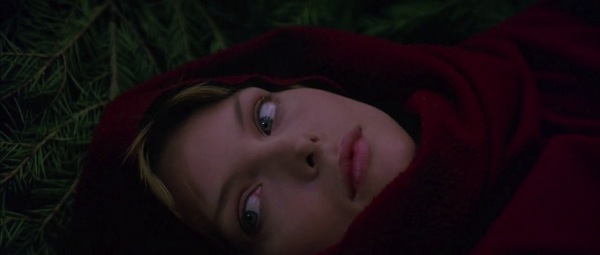
Naturally in the morning Philippe refers to their adventure as “nothing I couldn’t handle,” but the audience knows the truth. From this point, the film shifts again, and Isabeau changes her black cloak for a red one.
The film then takes the next step in its quiet subversion: the presumptive hero, Etienne Navarre, is wrong. About everything. His entire, vengeance-based plan is The Worst Thing He Can Do, because killing the Bishop, the one thing that has driven him for the last three years, will make the curse permanent. (We don’t know how Imperius knows this, but it’s safer to trust him on this.) Isabeau, Philippe, and Imperius all know this, and try to make him see reason, but he stubbornly goes ahead, insisting on his own way until he almost dies in his wolf form. Philippe, the mouse, the weak one, saves him while he’s in wolf form, and finally convinces him to give Imperius the extra day he needs to test his theory.
Imperius’ Arc from Comic Fool to Hero.
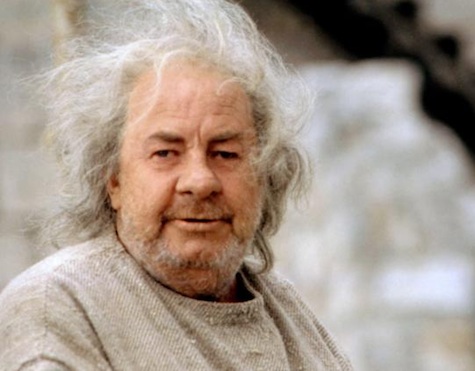
We’re introduced to Imperius as a comical character. He’s a jolly, drunken, round friar, who’s as annoyed by Lent as any sensible person. But as we get to know him, we see that he has the most tortured backstory of any of the characters. His betrayal of Isabeau and Navarre has altered the course of his life. How Imperius learned of the curse is never clear, but the devastated friar exiled himself to a rickety monastery to alternately search for ways to break the curse, and drink himself into oblivion. Luckily, he finds a possible solution before his liver gives up on him.
But what’s more interesting is Imperius’ relationship with the divine. He claims that the Bishop has allied himself with the Devil, and that the curse was “spat forth by Hell itself.” He also regards the coming eclipse as proof that God has forgiven him for breaking the seal of confession. This ties a story that could be a simple fairy tale into much larger cosmic forces, a battle between good and evil on a grander scale. Rather than just being a comic foil, or even a secret badass, Imperius ends up being a true hero, as his knowledge finally allows the lovers to break the curse. And his actions may actually be guided by God.
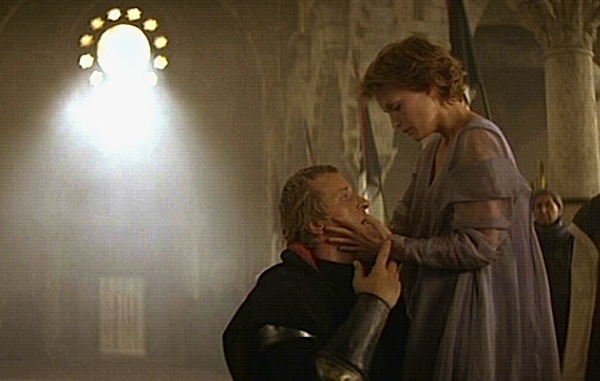
Love May Conquer All, but Science Helps
Imperius credits God with giving him the knowledge to break Isabeau and Navarre’s curse, but this is one of the few fairy tale films that can also have a purely scientific explanation. Since the couple needs to face the Bishop together, on a day when there is no night and a night when there is no day, an eclipse creates a perfect, scientifically-plausible miracle to save their relationship.
Wait, Who’s the Hero Again?
Everyone saves everyone else. Navarre saves Phillipe in the beginning, and murders the Bishop to save Isabeau from his final attack. But Isabeau grits her teeth and remains conscious during an arrow extraction, and saves Navarre twice while he’s in his wolf form (plus attacking people on his behalf while she’s a hawk). Phillipe dives right into an icy lake to save Wolf-Navarre from drowning, and (mostly) willingly sneaks back into the castle of Aguila to help his friends, even though it’s certain death if he’s caught. And Imperius dedicates years of his life to studying the curse, nurses Isabeau after her wound, and goes up against a Satanic Bishop.
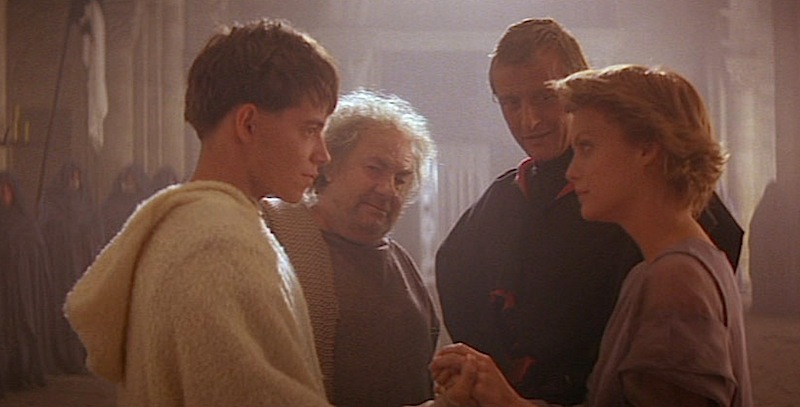
So in the end Ladyhawke isn’t a typical fairy tale tweak, or a coming-of-age film about a young thief who finds a higher purpose, or a tale of a dashing knight who rescues his ladylove, or a tale of good vanquishing a satanic evil—it’s all of those things. And I love it.
Leah Schnelbach thinks today’s movies need more evil Bishops. You can find her on Twitter!










